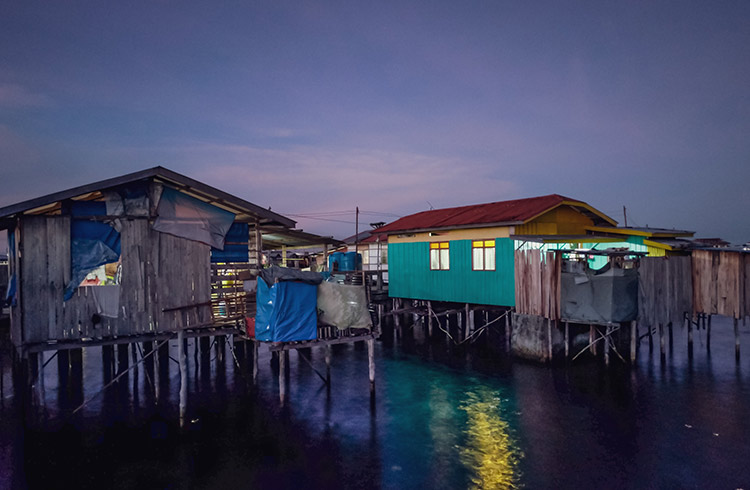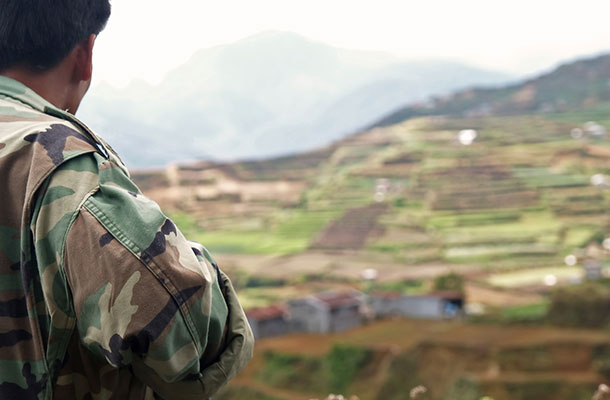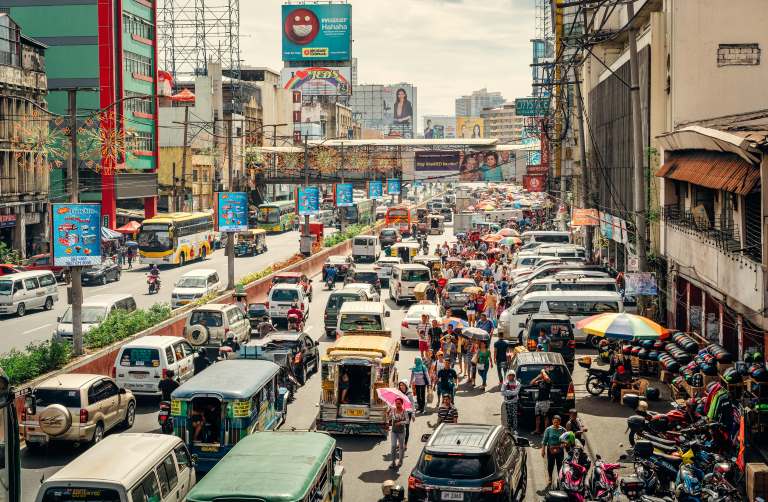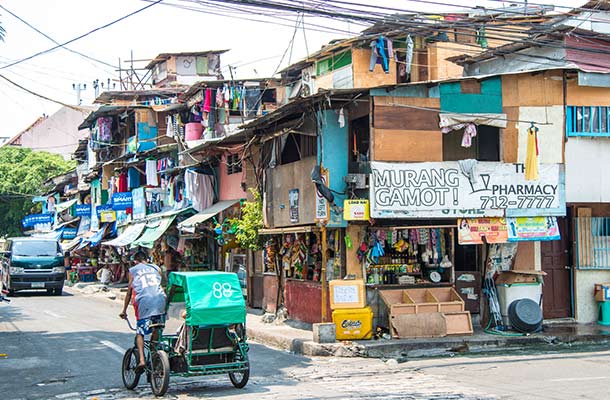Kidnapping Danger for Travelers in the Southern Philippines
Even the most experienced travelers should be aware of the risk (and seriousness) of kidnapping in the Philippines, particularly Mindanao. Here's what you need to know.
 Photo © Getty Images/Joel Gerone Larupay / EyeEm
Photo © Getty Images/Joel Gerone Larupay / EyeEm
The Philippines is a wonderful tourist destination, with sparkling beaches, sublime rainforests, rich history, distinctive food, and welcoming people. Unfortunately, its deep south has long been plagued by civil unrest, terrorism, and kidnappings of tourists. Here’s a guide to understanding this issue and protecting yourself.
- Why is kidnapping common in the Philippines?
- Understanding Government travel advisories
- Where in Mindanao can you safely travel?
- The Sulu Sea is a kidnapping hotspot
Why is kidnapping common in the Philippines?
These security problems are concentrated in the Philippines’ second-largest island, Mindanao. While most of the Philippines is quite safe for tourists, many Western Governments advise their citizens to either avoid, or strongly reconsider, traveling to Mindanao. Those warnings cite ongoing safety concerns in this region of the Philippines, such as abductions, terrorism, bombings, and sudden outbreaks of violence.
Such issues have persisted for more than 30 years due to the presence in Mindanao of Islamic terrorists like the infamous Abu Sayyaf Group. Financially supported by the powerful Islamic State, Abu Sayyaf Group want to create an independent Islamic nation in Mindanao, breaking away from the Catholic-majority Philippines.
To try to achieve this, they’ve repeatedly used violence and terror. They’ve killed hundreds of police, soldiers, and citizens while laying siege to cities, detonating bombs in public, and carrying out kidnappings. Often their abductions have targeted tourists. That’s because such kidnappings help the Islamic extremists to fund their activities, as they are commonly able to secure large ransoms in exchange for the safe return of tourists.
Understanding Government travel advisories
As mentioned above, many Western Governments advise their citizens against traveling to parts of the southern Philippines. But what do such warnings mean, and how do these Governments come to this conclusion?
Before flying to any country in the world it’s wise to check Government travel advisories for that destination. The US, Canada, UK, and Australia have websites which list travel advisories for every country, assessing how safe each destination is for foreign visitors.
These advisories provide an overview of security issues in each country and, most importantly, a regularly updated safety ranking. For example, the US advisory system ranks every nation from the safest (Level 1), to Level 2 (exercise increased caution), Level 3 (reconsider travel) and Level 4 (Do Not Travel).
Almost 30% of countries are right now ranked as Level 3 or Level 4. The Philippines overall is ranked at Level 2 currently, but parts of its south have a separate ranking of Level 4. Bear in mind that, by traveling to a level 3 or 4 destination, you are not just risking your safety. It can also cause complications with your travel insurance, as your policy may be voided if you choose to enter a country which is rated high-risk.
Even more serious, in Level 4 regions, your Government’s ability to provide you with consular assistance can be limited. This is the case in parts of the Philippines, as I’ll explain in the next section.
Where in Mindanao can you safely travel?
Tourists to the Philippines are at the greatest risk of being kidnapped, or getting caught in the crosshairs of civil unrest and terrorism, in the western part of Mindanao. This area is the stronghold of Abu Sayyaf Group and other Islamic extremists.
The US for years has ranked this area as a Level 4, or “Do Not Travel”, destination. In fact, it considers this island so unstable that it warns “the U.S. government has limited ability to provide emergency services to U.S. citizens in Mindanao, as U.S. government employees must obtain special authorization to travel there”.
Especially dangerous for travelers is the city of Marawi, on the northern banks of Lake Lanao. Although Marawi owns a picturesque location, it has been the scene of shocking violence in recent years, including a five-month-long siege by Islamic extremists who battled the Philippines military, resulting in hundreds of deaths.
Somewhat confusingly, Davao, the capital of Mindanao in the island’s east, is widely considered to be quite a secure destination, due to its extremely high presence of police and military. So, tourists who have a very strong reason to visit Davao can do so in relative safety. But once they’re on mainland Mindanao, the dangers to tourists increase the further they venture away from that city.
The same goes for popular resort island Siargao, which is only 19mi (30km) from the northeast coast of Mindanao. Although tourists are still advised to be wary here, they can feel quite secure as they savor its renowned surfing spots and reef diving locations.
The Sulu Sea is a kidnapping hotspot
While Siargao and other islands east of Mindanao are fairly secure, the waters to its west are some of the most dangerous on the planet – not due to being rough, but rather because of the consistent threat of pirates. Called the Sulu Sea, it is a huge area, more than 250mi (400km) wide and 400mi (645km) long.
This sparkling body of water stretches from Mindanao west to the spectacular island of Palawan, home to many popular resorts and some of the Philippines’ finest beaches. In between those two islands is a UNESCO World Heritage Site that should be a major tourist drawcard, the Tubbataha Reef Marine Park.
Unfortunately, this magnificent diving location, which brims with exotic marine flora and fauna, is in the middle of the Sulu Sea, one of the world’s piracy and kidnapping hotspots. Each year, the Sulu Sea is the scene for many attacks and hijacks on commercial vessels or tour boats by pirate gangs, often linked to Islamic extremist groups. This problem has become so serious that the US Government now advises its citizens not to travel to the southern part of the Sulu Sea.
Related articles
Simple and flexible travel insurance
You can buy at home or while traveling, and claim online from anywhere in the world. With 150+ adventure activities covered and 24/7 emergency assistance.
Get a quote


3 Comments
simply jumping in the water saved half the people in N. Samal
hi. i am new user
and i would to ask community, most powerful forum engine is?
mybb etc? thanks digg
To anyone planning to go to the southern part of the Philippines, it's best to check with the local arm of the Department of Tourism. They usually have a facebook page or contact information available in their website. They can plan the tours for you and inform you of guide availability.
For high-risk areas, there usually is a group of military or police in the airport. They will stop you and check what you are there for, then they will provide you with information on who you can reach out to in case of emergency or if you need military/police escort. If no one checks on you upon arrival, look for them and check with them on security measures for you, they are really helpful.
Always be alert and do not wander around without your guide, especially in the mountain or forest area. Respect everyone around you and their culture, it goes a long way.